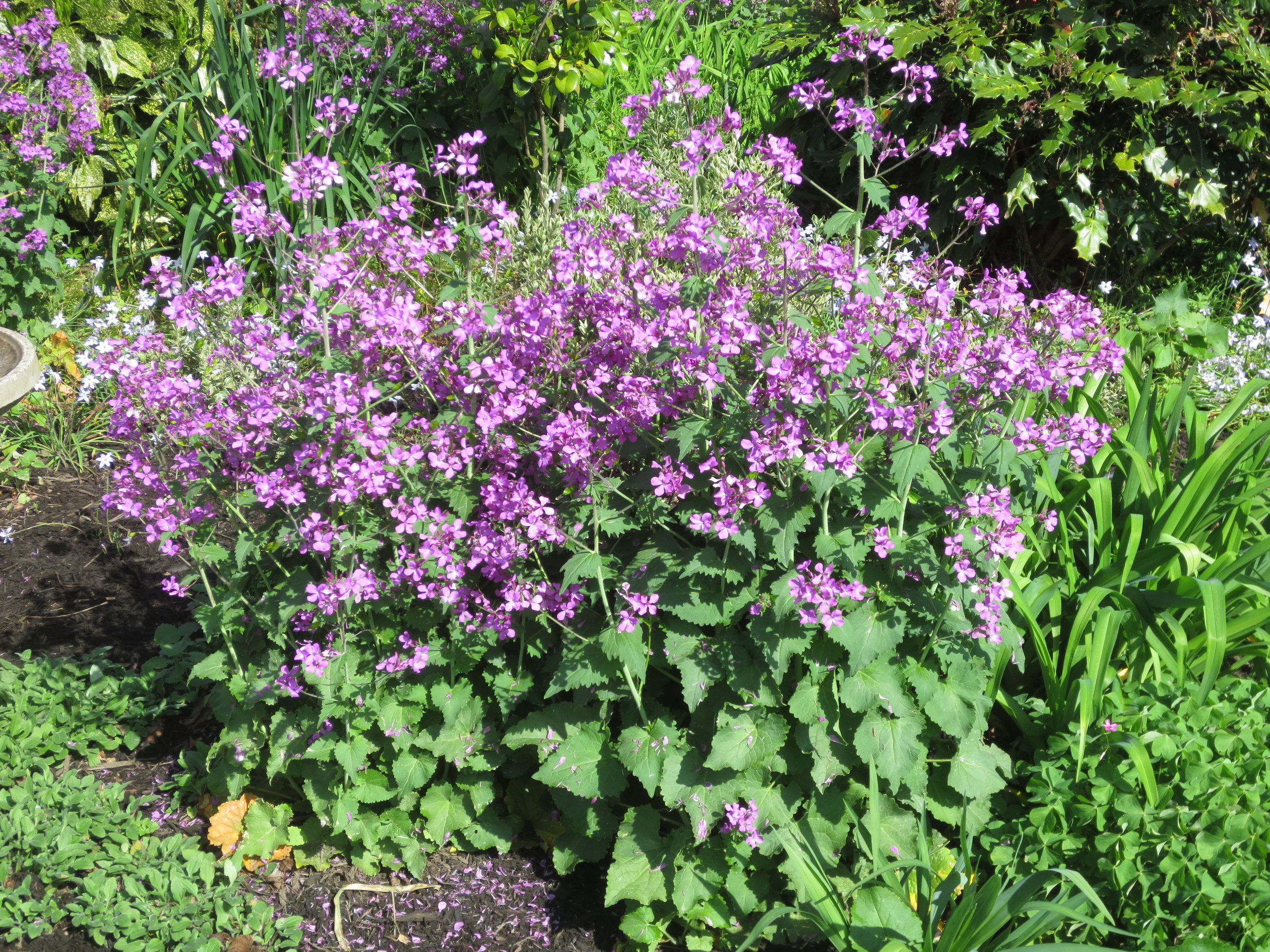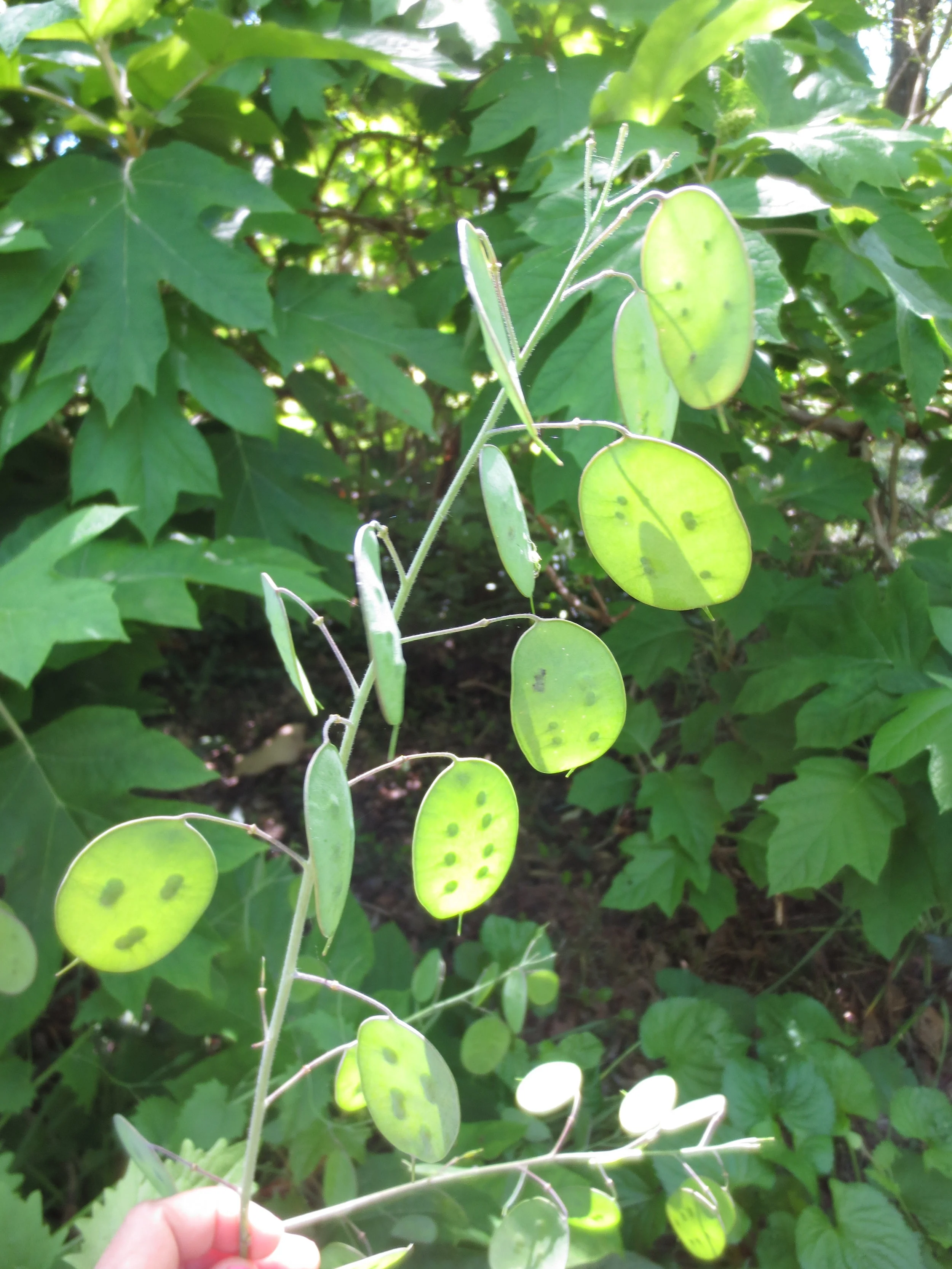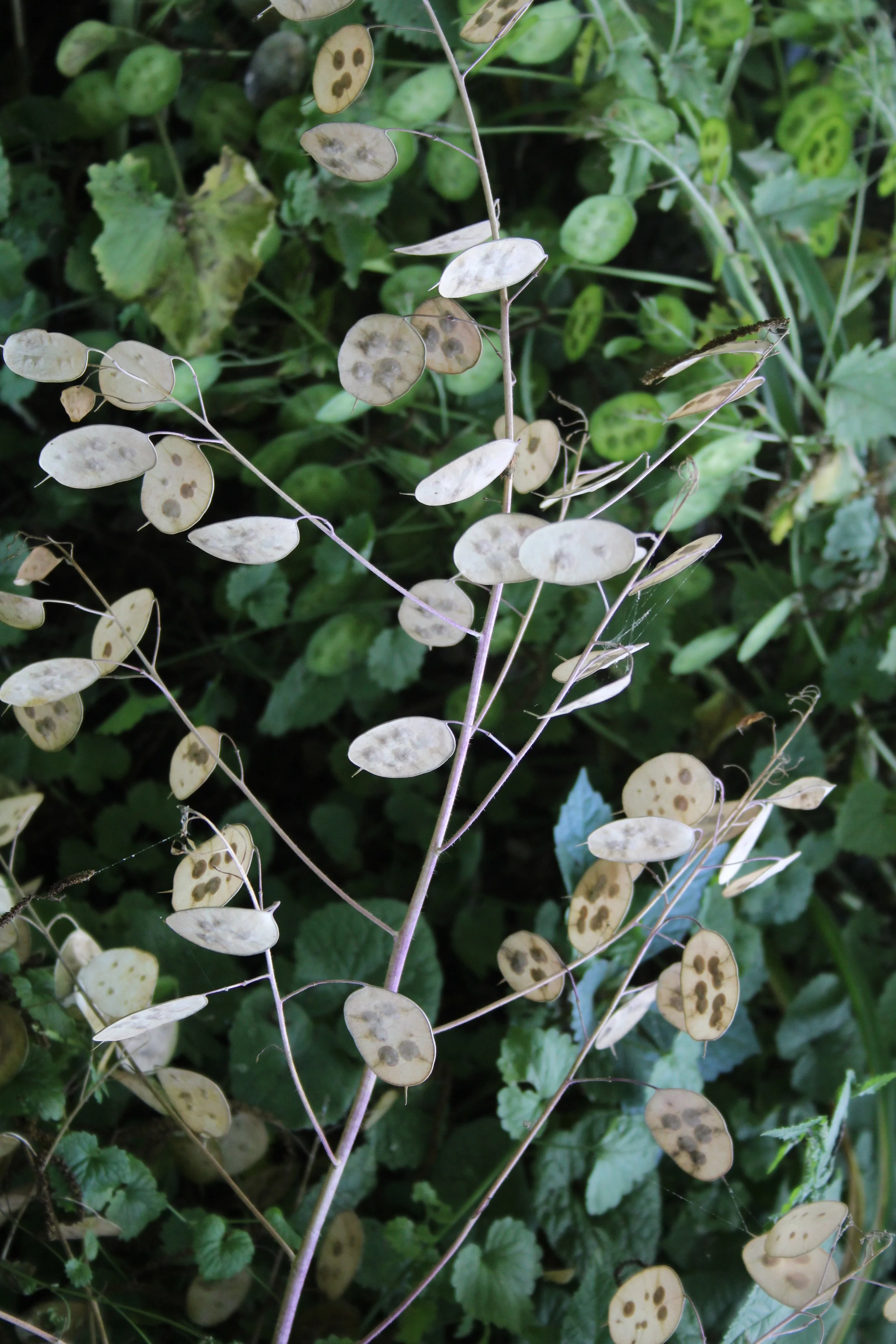Money does not grow on trees, but it does grow on Lunaria, whose common names include Money Plant, Dollar Plant, or Honesty. Lunaria annua would lead one to believe it is an annual, but it a biennial. The Lunaria portion means “moon like” in reference to its round white seeds, called silicles. As a true biennial, plants germinate and grow foliage one year, then flower, set seed, and die the next year. Blooms are purple, with an occasional lavender or white. They look spectacular paired with late season daffodils or bearded Iris. Average mature height is about two feet, with a spread half their height. Stems and leaves are both fuzzy to touch.
Seeds left on the plant are decorative through the summer but begin to look a bit tattered toward autumn. They self-sow, so allow a few seeds to remain to produce next year’s plants. Remove most seeds or you will be forced to remove an over-abundance of baby plants the following year. Retain and store a few seeds in a cool, dry place so you can plant them the following year. Otherwise, the biennial growth pattern will mean flowers only on alternate years. Seed pods, the “money,” are perfectly round, papery, almost translucent. They look like two pieces of tissue paper with a couple of seeds caught between them. Seeds can be extracted by running the dry pod between your fingers. Children can help harvest and plant these. Stalks of mature seeds make interesting additions to flower arrangements.
Plants prefer the dappled shade of woodland gardens or under deciduous trees. In the Mary Snoddy garden, they thrive on neglect. I have never watered or fertilized them.
Don’t confuse Lunaria with Dame’s Rocket, an invasive plant with similar flowers but different seed pods.
It is too bad that gardeners cannot use the Lunaria’s money to feed our voracious plant-buying habits.



